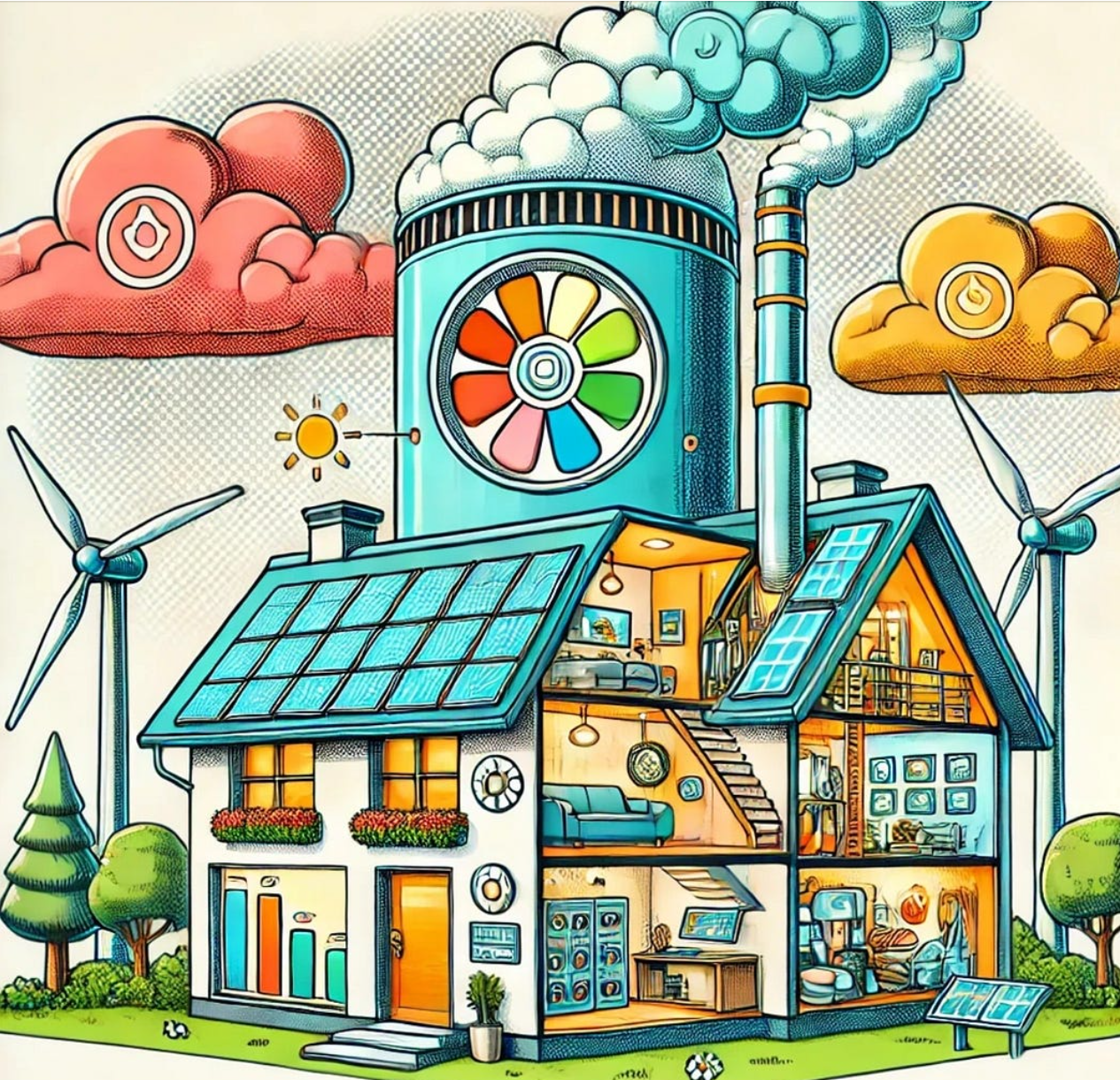As energy grids evolve to accommodate growing demand and renewable energy integration, Virtual Power Plants (VPPs) are emerging as an innovative solution to enhance grid stability and efficiency. Central to the success of VPPs is the incorporation of smart home technologies, which transform individual households into active participants in energy management. By leveraging distributed energy resources (DERs) and intelligent devices, smart homes can contribute significantly to the operation of VPPs, offering benefits for both consumers and utilities, increasing the safety of both grid and enduser.
Smart Homes as Building Blocks of Virtual Power Plant
Smart homes are equipped with an array of advanced technologies such as programmable thermostats, smart plugs, intelligent lighting, energy-efficient appliances, and home energy management systems (HEMS) to control those. These devices can monitor and manage energy consumption in real time, enabling users to optimize their electricity usage based on pricing signals or energy availability. Moreover, many modern smart homes integrate renewable energy sources like rooftop solar panels and storage solutions such as BESS (Battery Energy Storage Systems), making them key contributors to VPP frameworks.
When connected to a VPP, a smart home becomes more than just a consumer of energy—it becomes a prosumer. This means it can both consume and produce electricity, dynamically interacting with the grid. For instance, a household with solar panels and a battery can store excess energy generated during the day and feed it back to the grid during peak demand, thus supporting grid operations.
How Virtual Power Plants Leverage Smart Homes
Virtual Power Plants aggregate distributed energy resources from smart homes, businesses, and renewable energy installations into a single, cohesive network. This aggregation enables the VPP to act as a single entity, capable of providing grid services traditionally reserved for large power plants. For example, VPPs can assist with demand side response (DSR), frequency regulation, and peak load shaving, all while utilizing the flexibility of interconnected smart homes.
One practical example of this interaction is Demand Side Response. During periods of high energy demand, the VPP can signal connected smart homes to reduce their consumption. This can be achieved by automatically adjusting thermostats, delaying appliance usage, or drawing power from home batteries instead of the grid. Conversely, during periods of low demand, smart homes can consume more energy, such as charging electric vehicles or pre-cooling or heating spaces, to absorb excess electricity.
Benefits of Smart Home Integration in VPPs
The integration of smart homes into VPPs offers numerous benefits. For utilities, VPPs improve grid resilience by reducing dependence on centralized power plants, which are more vulnerable to outages. By distributing energy generation and storage across thousands of households, VPPs enhance energy reliability and reduce transmission losses. Additionally, the ability to incorporate renewable energy into the grid helps utilities meet decarbonization goals.
For consumers, participation in a VPP can translate into economic benefits. Many utilities offer financial incentives to homeowners who participate in demand response programs. Furthermore, efficient energy management reduces utility bills, while the use of renewable energy minimizes carbon footprints. Smart homes also offer convenience and control, allowing users to customize their energy usage to suit their preferences and schedules.
Challenges and Barriers to Adoption
Despite the promising potential of smart homes in VPP systems, there are challenges to widespread implementation. One of the primary barriers is interoperability. Smart home devices often operate on different protocols and platforms, making seamless integration into a unified VPP difficult. Standardized communication protocols and compatible technologies are crucial for overcoming this obstacle.
Another concern is data security and privacy. The operation of a VPP requires the collection and sharing of significant amounts of data, including household energy usage patterns. Ensuring that this data is protected from unauthorized access and used responsibly is vital to gaining consumer trust and compliance with regulations.
Finally, achieving widespread adoption requires increased consumer awareness and participation. Many homeowners are unaware of the benefits of VPPs or are hesitant to invest in smart home technologies due to upfront costs. Education campaigns and incentives can play a role in addressing this issue.
Embedding VPP into Smarthome system provides more secure and resilient solution, local computing ( in smarthub based systems), increasing both security and changing it from gimmick — to actual benefit.
The Future of Smart Homes and VPPs
The integration of smart homes into VPPs represents a transformative shift in how energy is managed and consumed. As technology continues to advance, the role of households in supporting grid operations will only increase. Innovations in artificial intelligence, machine learning, and IoT are expected to enhance the efficiency and responsiveness of VPP systems, enabling them to adapt to changing energy dynamics.
Moreover, supportive regulatory frameworks and government incentives will be critical in fostering the growth of VPPs. Policies that encourage renewable energy adoption, demand response participation, and investment in smart grid infrastructure will accelerate the transition to a more sustainable energy future.
Summary
Smart homes, when integrated into Virtual Power Plants, offer a sustainable, efficient, and consumer-friendly approach to modern energy management. By transforming households into active participants in the grid, VPPs leverage distributed energy resources to enhance grid stability, reduce emissions, and empower consumers. While challenges remain, ongoing research, technological innovation, and supportive policies are paving the way for the widespread adoption of this revolutionary energy paradigm. As the energy landscape continues to evolve, the collaboration between smart homes and VPPs will be instrumental in shaping a resilient and sustainable future.



